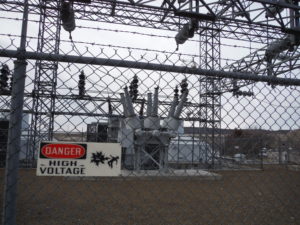
Decommissioning the Lower Snake River Dams Would Help Resolve the Energy Oversupply Problem In the Pacific Northwest and Save Wild Salmon from Extinction
- The Pacific Northwest region is energy rich. Currently there is a 16% surplus of energy.1
- Hydropower generated by the costly and environmentally harmful four lower Snake River dams is not needed from an energy capacity standpoint. If the dams were decommissioned today, capacity utilization would increase only slightly from 84% to about 86.5%.2
- If the Snake River dams were breached, wild salmon could recover, while ratepayers would pay the same or slightly lower rates for non-hydropower energy alternatives. 3
- Energy load growth rates are low in the Pacific Northwest and are likely to remain low. From 1995 through 2012, annual energy loads in the region grew at an average rate of only 0.40 percent, and winter peak loads did not grow at all.4
- The region is going further into surplus as more and more affordable renewable wind and solar projects come online. 5
- In fact, renewable wind and solar plants are being added to the region’s system so rapidly that there are claims that green energy is deluging the system. 6
- Energy “oversupply” is not “surplus” energy. Oversupply is energy in the system for which there is no demand. For years, Bonneville Power Administration (BPA) has been forced to deal with energy oversupply due to over-generation of hydropower. When hydropower overgeneration occurs, often because of heavy rains, runoff from large snow pack, or flood events, BPA runs excess water through dam turbines, which increases the amount of hydropower entering the power transmission grid. This affects BPA’s ability to reliably transmit power as the additional hydropower stresses the system, causing overloads and potential outages.7
- Oversupply is normally the result of high flows that must go through turbines instead of over spillways to the point of exceeding dissolved gas limits which kills salmon.
- To promote increased energy use in an attempt to reduce energy oversupply, BPA is already reducing industrial users energy rates. 8
- Due to oversupply, BPA at times pays California to receive Northwest energy. The U. S. Energy Information Administration identified 84 instances of “negative prices” in the Northwest in 2011, caused by abundant hydropower at periods of low demand.9 “Negative pricing” is the term for BPA paying another entity to take unwanted power (oversupply).
- Due to energy oversupply, BPA at times pays wind generators to take energy off the grid. “We can’t find enough demand for the amount of energy created by Mother Nature,” said BPA spokesperson Doug Johnson. BPA paid wind operators $2.7 million in 2012 to stay off line so it could make room for the power from hydroelectric generators handling the runoff from melting mountain snows.10
- The federal government, acting through the U.S. Army Corps of Engineers, can solve the hydropower over-generation problem by breaching the lower Snake River dams, beginning immediately in 2016. This action would allow ESA-listed wild salmon to recover, save ratepayer and taxpayer dollars, and resolve an ecosystem crisis.
1 Anthony Jones, Lower Snake River Dam Alternative Power Costs, 6/22/15, pp. 7-8, https://srkwcsi.files.wordpress.com/2015/06/2015-tony-jones-lsd-hydropower-replacementcosts.pdf.
2 Id., p. 4
3 Id.
4 BPA Focus 2028, Wrap Up, 2/12/16, p. https://www.bpa.gov/Finance/FinancialPublicProcesses/2028/doc2028/Wrap-Up Session.pdf; Northwest Power Council, Low Load Growth, and What It Means for Utilities, Electricity demand in the Northwest has been flat since the mid-90s–is this the new normal?, 1/21/14, https://www.nwcouncil.org/news/blog/load-growth-trends/.
5 Jones, Lower Snake River Dam Alternative Power Costs, supra, p. 15.
6 Id.
7 Washington Journal of Environmental Law & Policy, Pearsall, Drew, Bonneville’s Energy Curtailment Problem, 2013, p. 87, https://digital.law.washington.edu/dspacelaw/bitstream/handle/1773.1/1260/3WJELP079.pdf?sequence=1.
8 The Bellingham Herald, New Ferndale smelter energy deal made to benefit both BPA, Alcoa, 4/13/16, http://www.bellinghamherald.com/news/local/article71706442.html.
9 Slate, The Night They Drove the Price of Electricity Down, 9/21/15, http://www.slate.com/articles/business/the_juice/2015/09/texas_electricity_goes_negative_win d_power_was_so_plentiful_one_night_that.html – rt. See also U.S. Energy Information Administration, Negative prices in wholesale electricity markets indicate supply inflexibilities, http://www.eia.gov/todayinenergy/detail.cfm?id=5110.
10 Bloomberg, Nuclear Industry Withers in U.S. as Wind Pummels Prices, 3/11/13, http://www.bloomberg.com/news/articles/2013-03-11/nuclear-industry-withers-in-u-s-aswind-pummels-prices-energy. See also Oregon Public Broadcast, Paying Wind Generators Not to Produce Power, http://www.opb.org/news/article/paying-wind-generators-not-to-producepower/.
